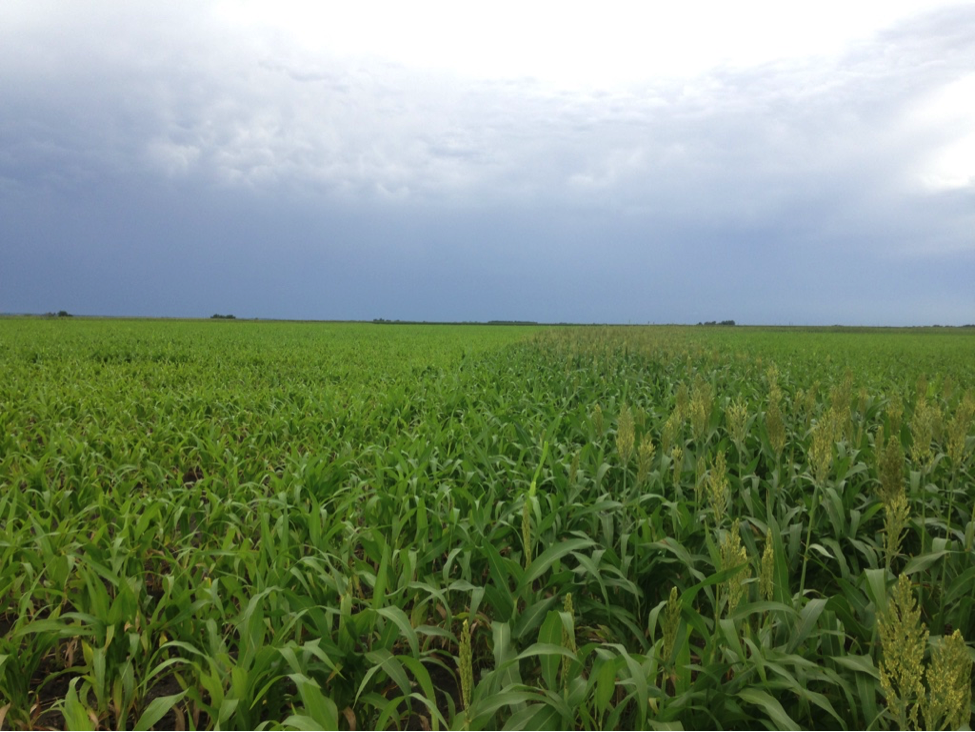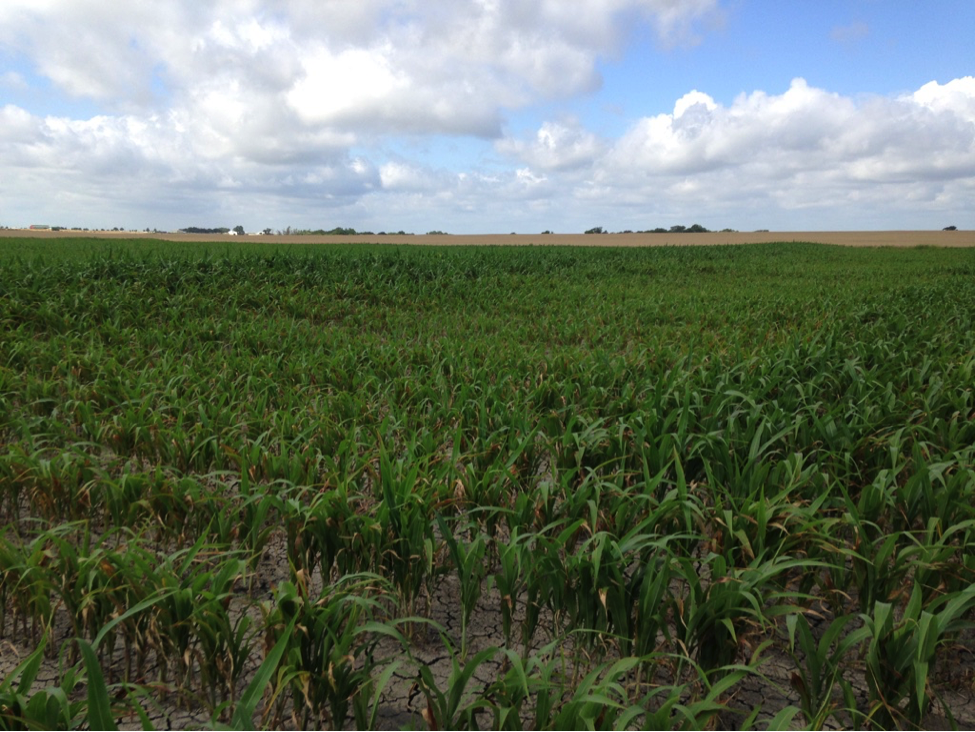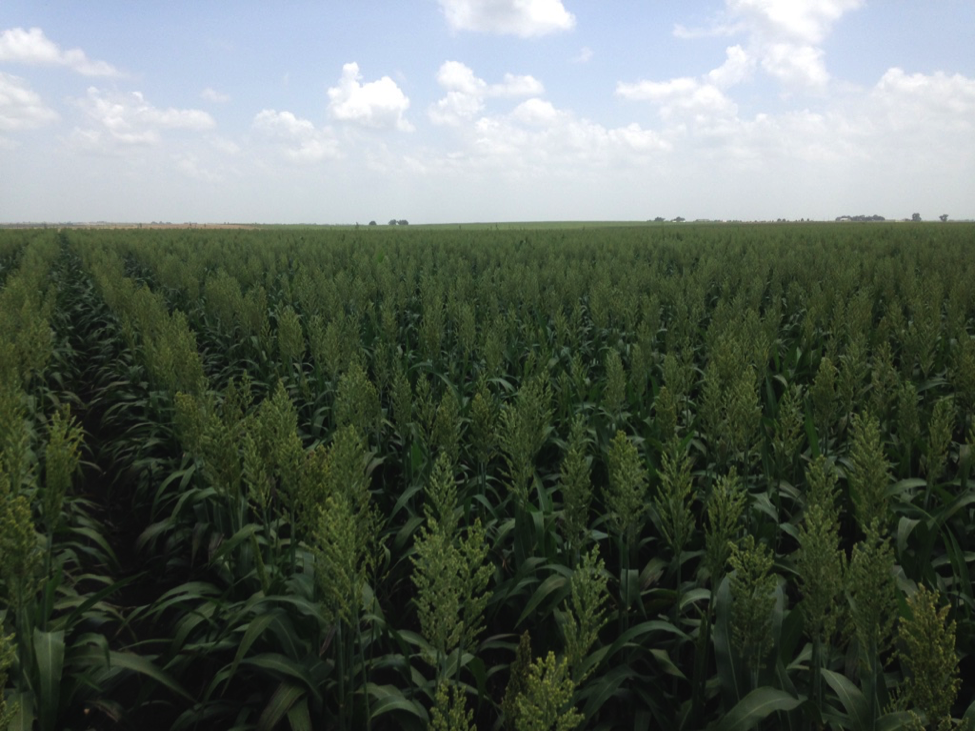This tip was provided by: Ronnie Schnell, Ph.D., Cropping Systems Specialist, College Station, (979) 845-2935, ronnie.schnell@ag.tamu.edu
Grain Sorghum Recovery from Saturated Conditions
Central and North-Central Texas
Repeated rain events during May resulted in soils being saturated, or even flooded, for extended periods of time for many sorghum fields across Texas. Rains have continued through June for many areas as well. At that time, many wondered what the impact would be on grain yield, if any? Predictions of final yield are difficult to produce for such an unusual situation but are important when deciding how much to invest to protect the crop from late season weeds and insect pests. Figure 1 shows grain sorghum in north central Texas on June 12, after two weeks of dry weather. This crop showed severe stunting and yellowing the previous week after over a month of repeated rain events and saturated conditions. This field received between 15 and 20 inches of rain during the month of May alone. However, new leaves had emerged from the whorl with good size and color by June 12.
With signs of recovery during early June, actual yield potential was still uncertain. Revisiting this field on June 30 revealed that significant recovery had occurred and substantial yield potential was available (Figure 2). An additional 6-8 inches of rainfall distributed throughout June with sunshine likely helped this crop recover, which had a shallow and damaged root system from May rains. Now it is obvious that there is yield worth protecting as this crop continues through grain fill stages.
Several issues have been reported throughout the region, including stinkbugs, midge, head worms and sugarcane aphids. Uniformity of crops within fields will create challenges for management of these pests (Figure 3). Sugarcane aphids are present, but numbers are generally below economic thresholds (http://txscan.blogspot.com/). It is uncertain what aphid populations will do later in the season. Therefore, it is important to treat pest problems that are present, such as stinkbugs or midge, when economic thresholds are reached (https://insects.tamu.edu/extension/apps/sorghumricestinkbug/index.php). Scouting will be important, making sure to check all areas of the field that are in various stages of development and to estimate the proportion of each field in contrasting stages of development.

Figure 3. Various stages of development present within sorghum fields along terraces due to wet conditions (June 30).
Sugarcane Aphid
High Plains
As reported in the newsletter above, please click here to view more information on the sugarcane aphid in the High Plains.










